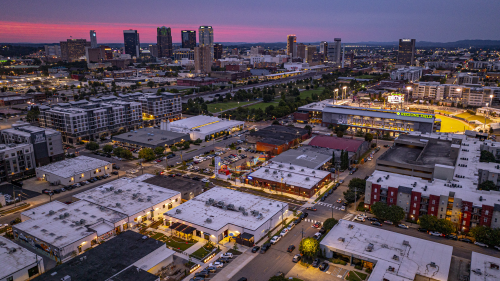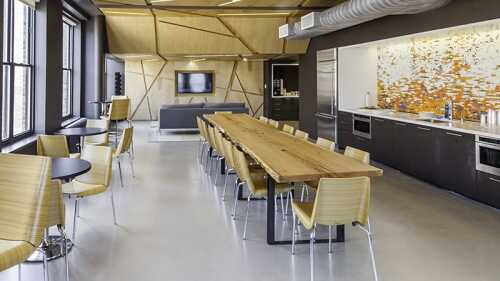Property Types
Hotels and Resorts
The Commercial Mortgage Alert Trepp weekly survey of 15 active portfolio lenders continued to trend lower with average spreads down 5 basis points. During the period, 10-year Treasury bond yields increased 9 basis points. Spreads in the August 31 Cushman & Wakefield Sonnenblick-Goldman fixed and floating mortgage rate survey came in slightly.
Hotel fundamentals are improving as panic and capitulation give way to a slow-growth environment. Yet, the global response to the economic crisis threatens to yield to sovereign risk in Greece and Spain and undermine a gradual, nascent recovery. These were the major messages at the Jeffer Mangels Butler & Marmaro conference Meet the Money: Unlocking the Game Changers for the Coming Recovery, held in early May in Los Angeles.
Trends are neither destiny nor gospel. They are guideposts identified from the collective experience of many professionals within an industry. In the resort, recreation, and tourism industry, numerous trends identified through experience and expectations are emerging to influence how and where people will buy and use resort real estate. Society is changing fast, and the economic conditions of the past two years have created much uncertainly. But what is discernible is that current trends are focused on valuedriven buyers, downsized purchases for personal use, and scalability.
Industrial
Standing in the shadow of Regions Field and within earshot of Railroad Park, Birmingham’s Urban Supply hints at what the next chapter of downtown life could look like. Once-quiet brick warehouses are being steadily reimagined into patios, storefronts, and gathering spaces along a new pedestrian alley. Early tenants have begun to open their doors, and programming is slowly bringing people into the district. While the project is still in its early stages, the framework is in place for a vibrant hub that will grow block by block in the years ahead.
What trends are shaping the future of the industrial sector? Four experts from ULI’s Industrial and Office Park Development Council talk about the industrial submarkets and property types that offer the greatest opportunities, challenges developers face in bringing new projects to market, ways artificial intelligence and emerging technologies are reshaping the sector, tenant priorities, and other key trends.
After a quiet first half of 2024, CMBS originations increased 59 percent in Q3 on a year-over-year basis, according to the Mortgage Bankers Association’s Quarterly Survey.
Mixed-Use
Homes near public transit retained their value better during the recession than their counterparts in auto-dependent areas, according to a recent study. What’s impressive is the extent of it: In five metropolitan areas, residential property values performed 42 percent better on average.
Neighborhoods with a mix of residences, offices and retail outlets are thought to have a host of benefits. But a new study found that commercial-only areas also had the highest crime rates when compared to similar blocks that included residences.
A new public/private, mixed-use Uptown project unites celebrated but disparate institutions in Cleveland’s University Circle district.
Multifamily
A series of presentations at the ULI China Mainland Winter Meeting, held in Shanghai in December, demonstrated how the growth of the sharing economy, combined with the desire for social connectivity, is affecting the development and management of office, residential, and hotel properties.
With rising demand for small cohousing units, developers in Asia embrace the for-rent market.
Austin-based Kasita wants to hit the developer market with small, precision-built turnkey homes.
Office
Ten years ago, San Antonio’s bond program dedicated a mere $10 million to downtown improvements. By 2012, that number had jumped to $90 million, and the most recent bond initiative, passed in May, earmarks $170 million for downtown projects.
With a handful of WELL-certified projects now in operation and hundreds in the certification pipeline, real estate owners and developers are starting to take a hard look at the business case for healthy building certification.
Delegates at ULI Japan’s recent Spring Conference, held in Tokyo, heard from a number of landlords operating a number of different models for office occupation about how their operations worked and their thoughts on the future.
Residental
Why do cities with the fastest-growing economies—including Seattle, San Francisco, New York City, and Austin--suffer from a growing imbalance between job growth and housing supply? A panel at the ULI 2017 Spring Meeting in Seattle examined why hot-market cities are failing to build enough housing for new workers, often by staggering ratios.
The ULI Terwilliger Center for Housing has announced the finalists for this year’s Jack Kemp Excellence in Affordable and Workforce Housing Award, which honors exemplary developments that ensure housing affordability for people with a range of incomes. The award recognizes efforts by the development community to increase the supply of housing that is affordable to households earning less than 120 percent of the area median income.
Affordable and workforce housing policies and initiatives put in place by the governments of Washington, D.C.; Boston; Denver; and New York City have been selected as finalists for the 2017 ULI Larson Housing Policy Leadership Award
Retail
For decades, civic leaders have tried to revitalize Market Street, San Francisco’s central thoroughfare, only to see their efforts founder. “I sometimes call it the great white whale of San Francisco,” says Eric Tao, managing partner at L37 Development in San Francisco and co-chair of ULI San Francisco. “Every new mayor, every new planning director, every new economic development director has chased that white whale.” This year, however, an international competition of ideas hosted and run by ULI San Francisco, with support from the ULI Foundation, generated fresh momentum for reimagining the boulevard. The competition drew 173 submissions from nine countries and sparked new conversations about the future of downtown San Francisco.
The OAK project began in 2009, when a development firm set their sights on the corner of Northwest Expressway and North Pennsylvania Avenue, the state’s most important and busiest retail intersection. As the region’s only parcel capable of supporting a vertically integrated project of this scale and density, that land represented an opportunity to create something truly special.
As aging retail continue to evolve, one increasingly popular trend has been to redesign malls as town centers—recalling a time when such commercial districts were the heart and soul of a community. Mall–to–town center retrofits are emerging throughout the nation, especially in suburban communities, where pedestrian-friendly, mixed-use environments are highly attractive to millennials now raising families.
















